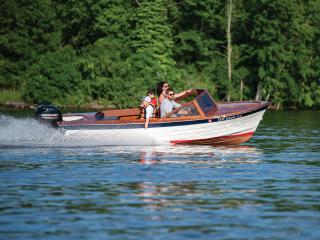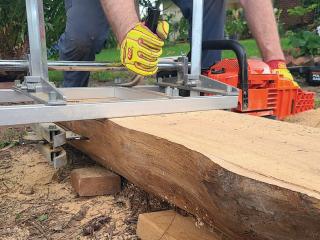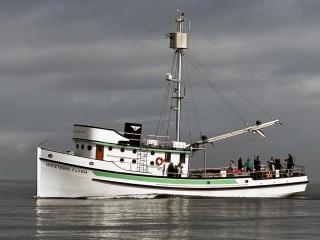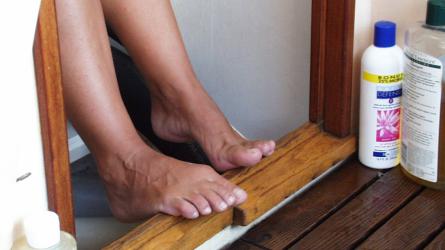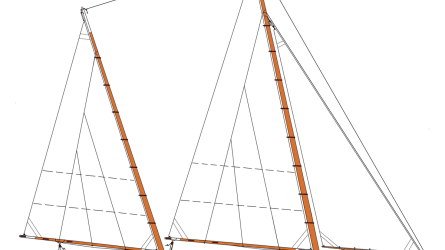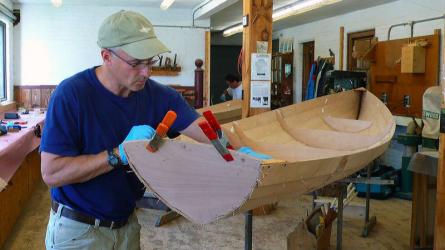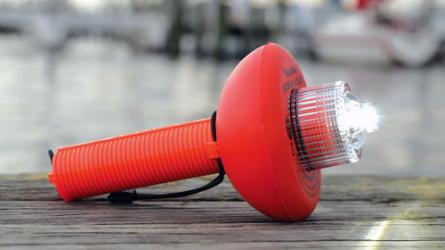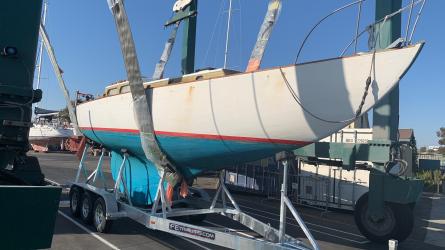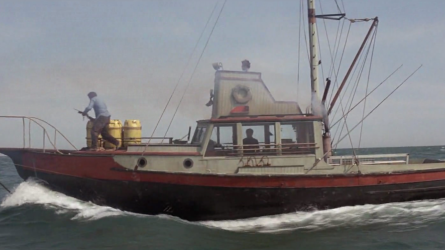September / October 2024
A Half-Century of Learning

ERIN TOKARZ
The Apprenticeshop in Rockland, Maine, this year completed its largest project yet, a multiyear reconstruction of a Dublin Bay 24 sloop for an Irish client.
In the 1960s and early ’70s, anyone fascinated by traditional boatbuilding or small-craft design soon found that resources were few. It was a restless generation, one that resisted conventionalism; these people were unlikely to line up for job-training programs geared toward the needs of industrial shipyards, and for many the thought of fiberglass hull layup held little appeal. But it was also a time of rediscovery, especially of traditional skills and the work of artisans—organic gardening, roots music, craft beer, handcrafted furniture, simple living. Amid this renaissance, wooden boatbuilding was a compelling and unique combination of head and hand skills, and there was real beauty in it. But without relatives or a community directly involved in boats, there seemed no entry, no clear path, no place to go.
Suddenly, like the greening of spring, fresh shoots appeared. In 1972, Lance Lee opened his first Apprenticeshop in Bath, Maine. Jon Wilson founded WoodenBoat magazine in 1974, exactly 50 years ago as of this current issue. Two years later, Dick and Colleen Wagner opened The Center for Wooden Boats in Seattle, Washington, with a livery of small boats and an emphasis on hands-on learning that inspired many others. The Antique & Classic Boat Society was founded in 1975, the Wooden Canoe Heritage Association followed in 1979, and WoodenBoat School opened in 1981. The list goes on.
Good ideas spread quickly. In the half-century that has passed since those days, wooden boat building education programs have proliferated across the United States and around the world. People saw ways to reconnect with the water by rowing, paddling, sailing, and otherwise propelling themselves along neglected shorelines. With this came renewed appreciation for craftsmanship and a rededication to its preservation. If skills could be saved, worthy boats could be saved.
Today, a wealth of choices awaits anyone who wants to learn to build, maintain, or restore wooden boats. One- and two-week avocational courses such as those at WoodenBoat School serve those who don’t necessarily want to pursue a career. But for those who do, institutions such as The Landing School, The Northwest School of Wooden Boat Building, the IYRS School of Technology and Trades, and others have largely supplanted the boatyard apprenticeship system of earlier generations. The programs have adapted as boatbuilding itself changed, adding courses as wood-epoxy composites came to dominate new-boat construction, lavish restorations targeted pedigreed classic yachts, and new companies arose to take advantage of CNC machines to market a wide range of boats to home builders. In the early 1970s, the lapstrake Whitehall pulling boats of the 19th century held outsized importance as a touchstone; we’re a long way from Whitehalls now.
To read the rest of this article:
Click the button below to log into your Digital Issue Access account.
No digital access? Subscribe or upgrade to a WoodenBoat Digital Subscription and finish reading this article as well as every article we have published for the past 50-years.
ACCESS TO EXPERIENCE
Subscribe Today
1 YEAR SUBSCRIPTION (6 ISSUES)
PLUS ACCESS TO MORE THAN 300 DIGITAL BACK ISSUES
DIGITAL $29.00
PRINT+DIGITAL $42.95
Subscribe
To read articles from previous issues, you can purchase the issue at The WoodenBoat Store link below.
 Purchase this issue from
Purchase this issue from
